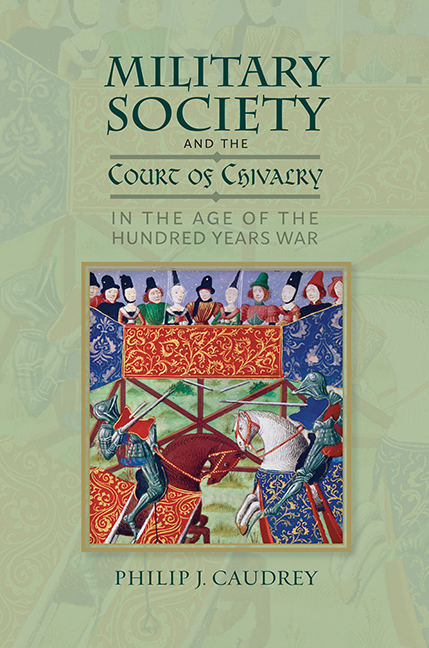Book contents
- Frontmatter
- Dedication
- Contents
- Acknowledgements
- Abbreviations
- Introduction
- 1 Military Service
- 2 Lordship
- 3 Region, Locality and Community
- 4 Soldiers, Civilians and Chivalric Memory
- Conclusion
- Appendix 1 Deponents’ Collective Military Records According to their Own Testimony
- Appendix 2 Lancastrian Retainers: Scrope & Hastings Defendants
- Appendix 3 Plaintiffs’ and Defendants’ Biographies
- Bibliography
- Index
- Warfare in History
Appendix 3 - Plaintiffs’ and Defendants’ Biographies
Published online by Cambridge University Press: 21 June 2019
- Frontmatter
- Dedication
- Contents
- Acknowledgements
- Abbreviations
- Introduction
- 1 Military Service
- 2 Lordship
- 3 Region, Locality and Community
- 4 Soldiers, Civilians and Chivalric Memory
- Conclusion
- Appendix 1 Deponents’ Collective Military Records According to their Own Testimony
- Appendix 2 Lancastrian Retainers: Scrope & Hastings Defendants
- Appendix 3 Plaintiffs’ and Defendants’ Biographies
- Bibliography
- Index
- Warfare in History
Summary
Richard, Lord Scrope of Bolton, Yorkshire (c. 1327–1403)
The third son of Sir Henry Scrope (c. 1268–1336), a royal justice from the North Riding of Yorkshire, and, alongside his brother, Sir Geoffrey of Masham (d. 1340), co-founder of the Scrope family's fortunes. Richard made his early reputation as a soldier, fighting at the successive battles of Crécy (Aug. 1346) and Neville's Cross (Oct. 1346), receiving a knighthood in the aftermath of the latter victory. By 1359, he had entered the employ of the young John of Gaunt and would continue forging his career in Lancastrian service over the next 20 years. Between 1365 and 1385, he campaigned beneath Gaunt's banner on five separate occasions. In 1371, having begun to take an active role in Yorkshire politics, he was raised to the peerage and appointed treasurer of England. Scrope's honourable conduct amidst the crisis of the Good Parliament in 1376 earned him widespread respect, and two years later he was called upon once again to serve the Crown as steward of the royal household during the minority of the young Richard II. Scrope's armorial controversy with Sir Robert Grosvenor (1385–90) coincided with his growing disaffection with the actions of his sovereign, resulting in his support of the Lords Appellant in 1387–8. By 1391, the year his victory over Grosvenor was confirmed, Scrope was in semi-retirement. His personal standing and long years of Lancastrian service saw him survive the Revolution of 1399, despite the execution of his eldest son, William. He died on 30 May 1403 and was buried in Easby Abbey.
Sir Robert Grosvenor of Hulme, Cheshire (d. 1396)
Sir Robert Grosvenor was probably the least-connected of the six protagonists across our three surviving armorial cases and little is known of his career beyond those facts explicated in Scrope v. Grosvenor. He served as a young man on the Gascony campaign of 1369 in the retinue of Sir James Audley, participating in the capture of La-Roche-sur-Yon and the sack of Limoges. He mustered for Edward III's abortive French expedition in 1372 and was next in arms in Scotland in 1385, during which campaign his arms were challenged by Lord Scrope. On the domestic scene, Grosvenor's landed wealth was located entirely in east Cheshire.
- Type
- Chapter
- Information
- Publisher: Boydell & BrewerPrint publication year: 2019

